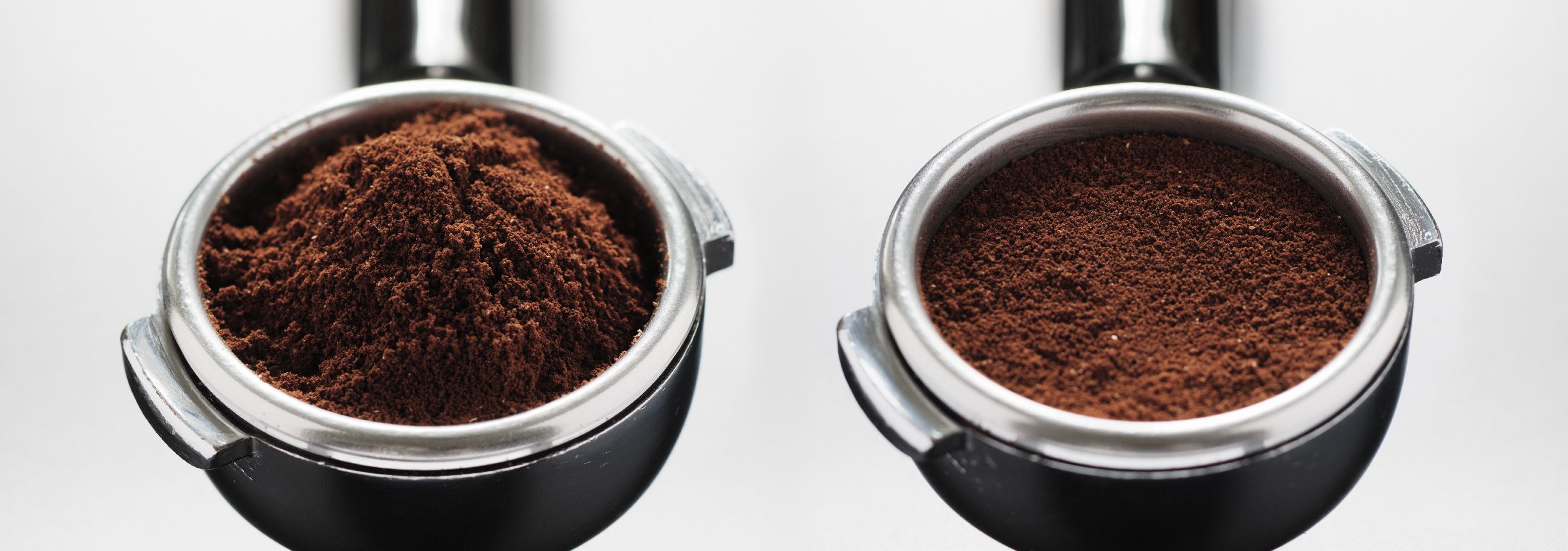In espresso making, we generally want to be able to pack our bed as tightly as possible. The insights of the previous lesson explain the effectiveness of some of the techniques we already use when preparing espresso, and suggest a few new possibilities for packing our coffee even more tightly.
Overcoming jamming
A basket full of loose coffee before distribution exists in a jammed state — much like our example of the pile of sand in Lesson 4.02. The jammed structure is held in place by friction between the particles, and the downward force of gravity on the powder.
Tapping or vibrating the basket briefly changes the direction of the forces on the material shifting grains sideways, rather than the force of gravity just pushing them downwards. This breaks up the arch-like structures causing the jam, allowing the coffee to pack more tightly together, and to fill any gaps (for example in the corners of the basket). This is why horizontal tapping is so successful as a distribution method — it not only levels out the coffee, but it breaks up some of the tiny gaps within the bed of the coffee formed when it reaches a jammed state.
Tamping and Nutation
When we tamp, we are forcing the coffee into another jammed state by applying a downwards force. The force applied overcomes friction between particles, breaking the initial jam from gravity in the loose packed state, and pushing them into closer contact with one another. Once this direct contact between coffee particles percolates through the puck, the coffee jams again. At this point, the coffee is much closer packed than before tamping, but there will still be some small voids within the puck, created by similar arch-like structures as before. Pressing harder than this will have no further effect, unless you press hard enough to seriously deform or break the coffee particles, which will take a lot of force.

